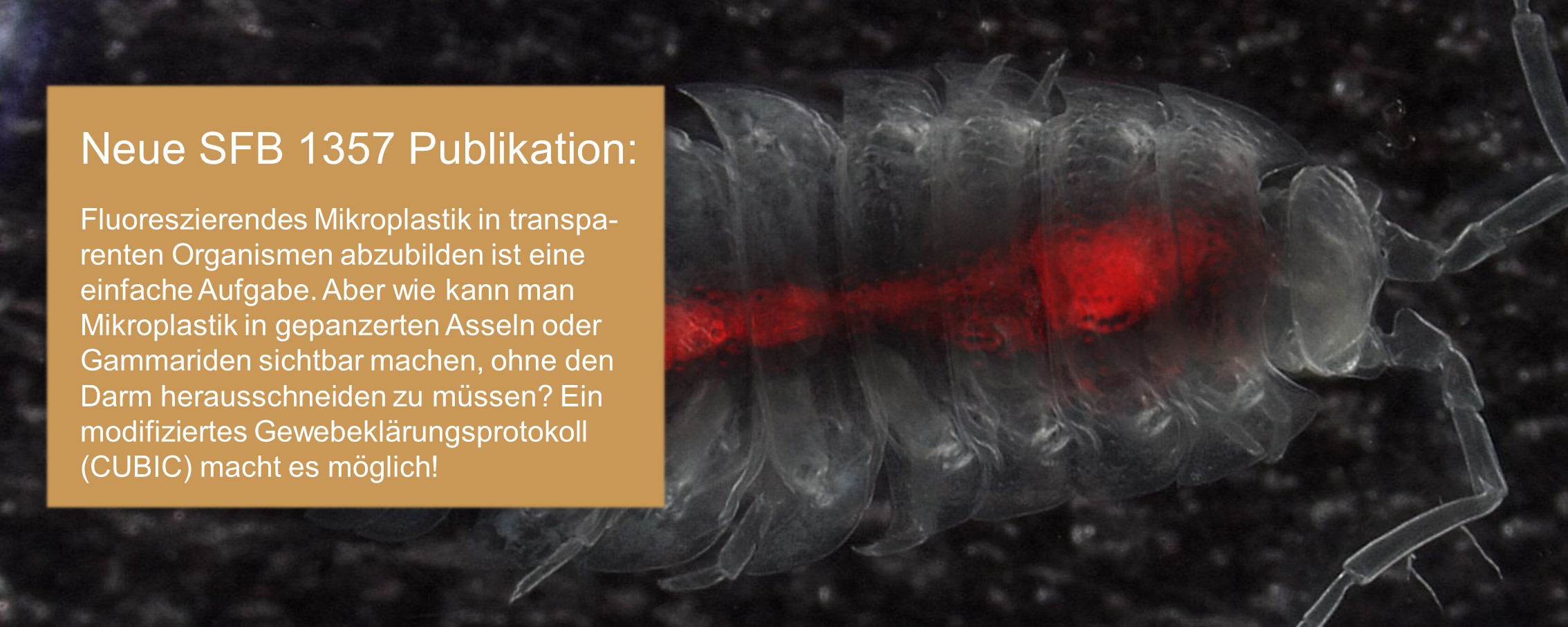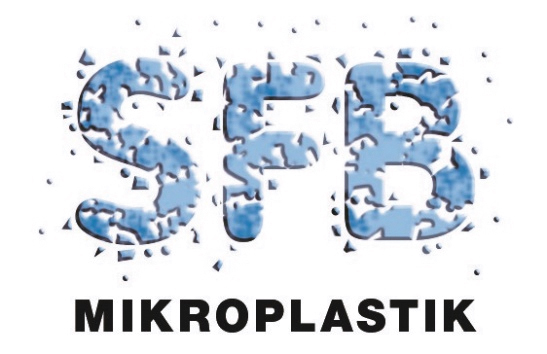News
Neue SFB 1357 Publikation: Ritschar (2022) - Taking advantage of transparency: A proof-of-principle for the analysis of the uptake of labeled microplastic particles by organisms of different functional feeding guilds using an adapted CUBIC protocol
01.08.2022

Herzlichen Glückwunsch an die Teams A03, A01 und KollegInnen der Tierökolie I: Sven Ritschar; Frederic Hüftlein; Lisa-Marie Schell; Julian Brehm; Christian Laforsch zu ihrer spannenden neuen Publikation in der Zeitschrift Science of the Total Environment:
"Taking advantage of transparency: A proof-of-principle for the analysis of the uptake of labeled microplastic particles by organisms of different functional feeding guilds using an adapted CUBIC protocol"
DOI: https://doi.org/10.1016/j.scitotenv.2022.154922
Abstract: The analysis of the ingestion of microplastics (MP) by biota is frequently performed through invasive procedures such as chemical digestion protocols or by histological analysis of thin sections. Different, promising approaches for the observation of ingested MP particles pose so called tissue clearing methods. They are currently applied to organs, tissue samples, or whole organisms, rendering the sample transparent and enable to look inside an otherwise opaque environment. To date, there is a lack of methods to detect labeled MP inside an opaque organism's digestive tract without interfering with the sample's integrity. Therefore, our goal was to adapt the CUBIC tissue clearing protocol (Clear, Unobstructed Brain/Body Imaging Cocktails and Computational Analysis) for aquatic and terrestrial organisms of various functional feeding groups for the analysis of the uptake of fluorescent labeled microplastic (MP) particles. We included the buff-tailed bumblebee Bombus terrestris, the compost worm Eisenia fetida, the woodlouse Porcellio scaber, the freshwater shrimp Gammarus roeselii, and the quagga mussel Dreissena bugensis in the analysis. The adapted CUBIC method has led to transparency in all normally opaque organisms. It further offers a simple way of locating fluorescent labeled MP inside the digestive system of the different organisms while leaving them intact.

